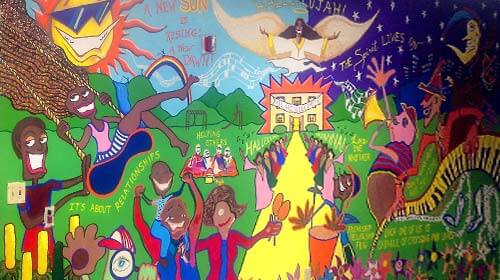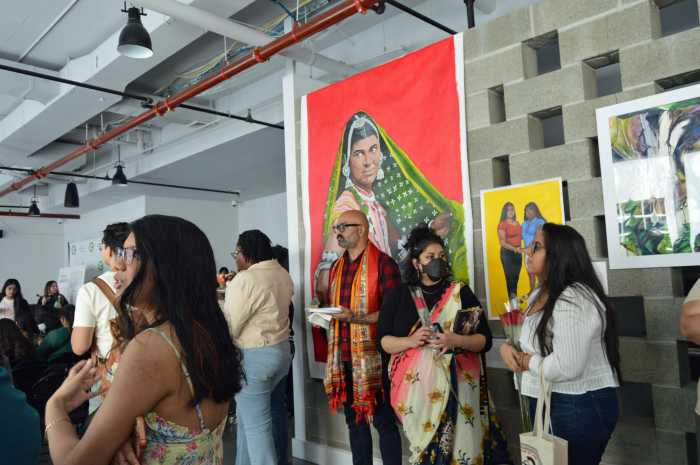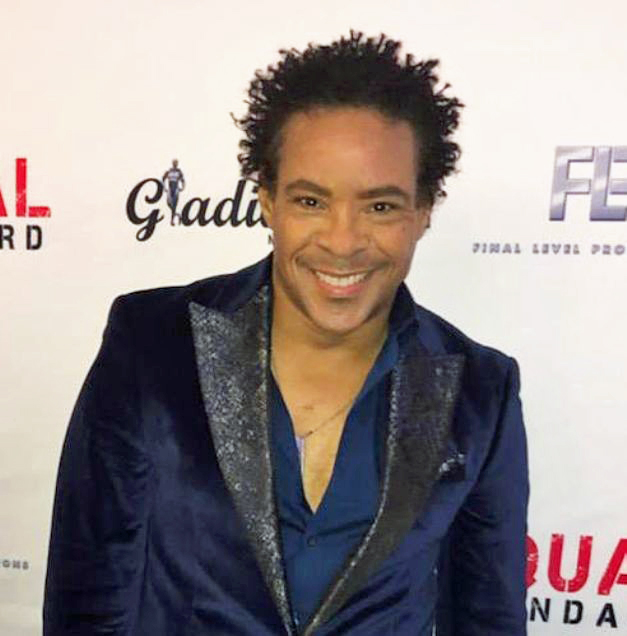Active and artistic residents at Bishop Henry B. Hucles Episcopal Nursing Home have created a 15-foot mural covering the walls of their activity room with a burst of color and energetic images that makes the home their own.
Since last November, a group of residents met weekly to brain-storm and paint ideas and images they wanted to see captured on a stretch of blank wall. The result is stunning and vibrant mural that adds a personal touch to the home they share in Bedford-Stuyvesant, Brooklyn.
Led by Art Therapist Catherine Gallagher, graduate of The School of Visual Arts, and Kate Schober, graduate of the Drama Therapy program at New York University, The Mural Project will continue through the end of the month and culminate in a grand unveiling party at Bishop Hucles. Visual artist and filmmaker Joe Kavitski volunteered to compose and paint the outline of the images in the mural. Residents painted the wall with some assistance from Joe. A short documentary about the project is in production.
Many of the residents working on the mural are older adults suffering from debilitating diseases including Parkinson’s disease, Alzheimer’s, and kidney disease. Many have amputations, glaucoma, and are in wheel chairs. After a long day at dialysis, one resident returns to Bishop Hucles and asks if she can paint the mural. She paints a family picnicking on the grass, a little boy sitting on his father’s shoulders, and a bird perched atop a mother’s head. She paints even though she is exhausted and comments, “It’s like Christmas morning!”
Those with dementia, whose memories are difficult to access, recall stories of their youth upon seeing and painting images in the mural. One resident looks up at a young girl on a swing. “I used to have long black hair like that,” she remembers, “They would tie it up with the white strings of a sugar bag.”
Among the residents are an anthropologist, a seamstress, a waitress who served soldiers during the war, a school teacher, grandmothers and grandfathers. For some, Bishop Hucles is their home, for others, a place of recovery and rehabilitation.
Even the staff is becoming involved, painting a row of flowers that grow on the very bottom of the mural. They could be having a busy and hectic day, but will stop, pick up a brush and take a few minutes to paint. Many have expressed it makes them feel calmer. All are working towards a common goal.
The first day, Kate and Catherine sat down with eight residents and asked them, “What is important to you in your life? What kinds of people, places, buildings, and animals do you envision? What things do you want to see that will help to tell your story?”
The residents began with the image of an angel, arms outstretched, watching over and protecting everything in the mural. They included a jazz band playing music, a choir singing, and a park with children. They emphasized community, helping others, and family. They included images from their everyday lives (grandchildren, a church steeple, the night sky) as well as images from their childhood (the corn stalks of the south, Baltimore crabs, and exploring in the woods as a child in a baseball cap.)
Joe describes the image on the wall, “The mural is an incredible representation of the residents’ creativity and a true reflection of their world. Everyone is active and energetic in the imagery and the reality is that many residents are disabled. So it was fitting when they gave a jazz musician a hook for a hand and a woman with one eye. This is their story. This is what they need to express. And it only enhances the dynamicism and depth of the work.”
In the final weeks of The Mural Project, lines of Resident Poetry written in a weekly Poetry group at Bishop Hucles will be interwoven throughout the images. These include “Don’t think about age, just live.” “The spirit lives on.” “It’s about relationships; helping others.” “A new sun is rising; a new dawn.”




















